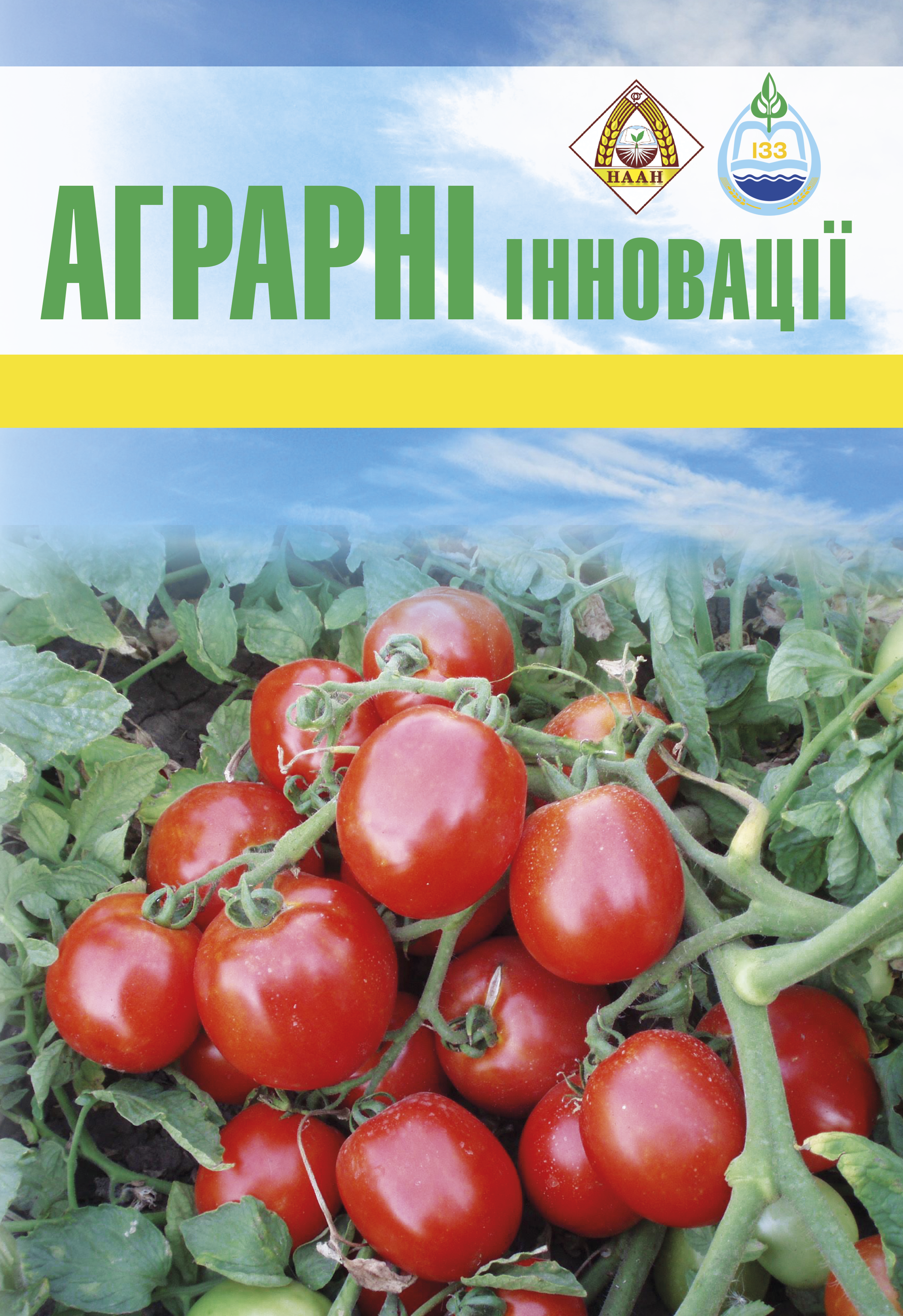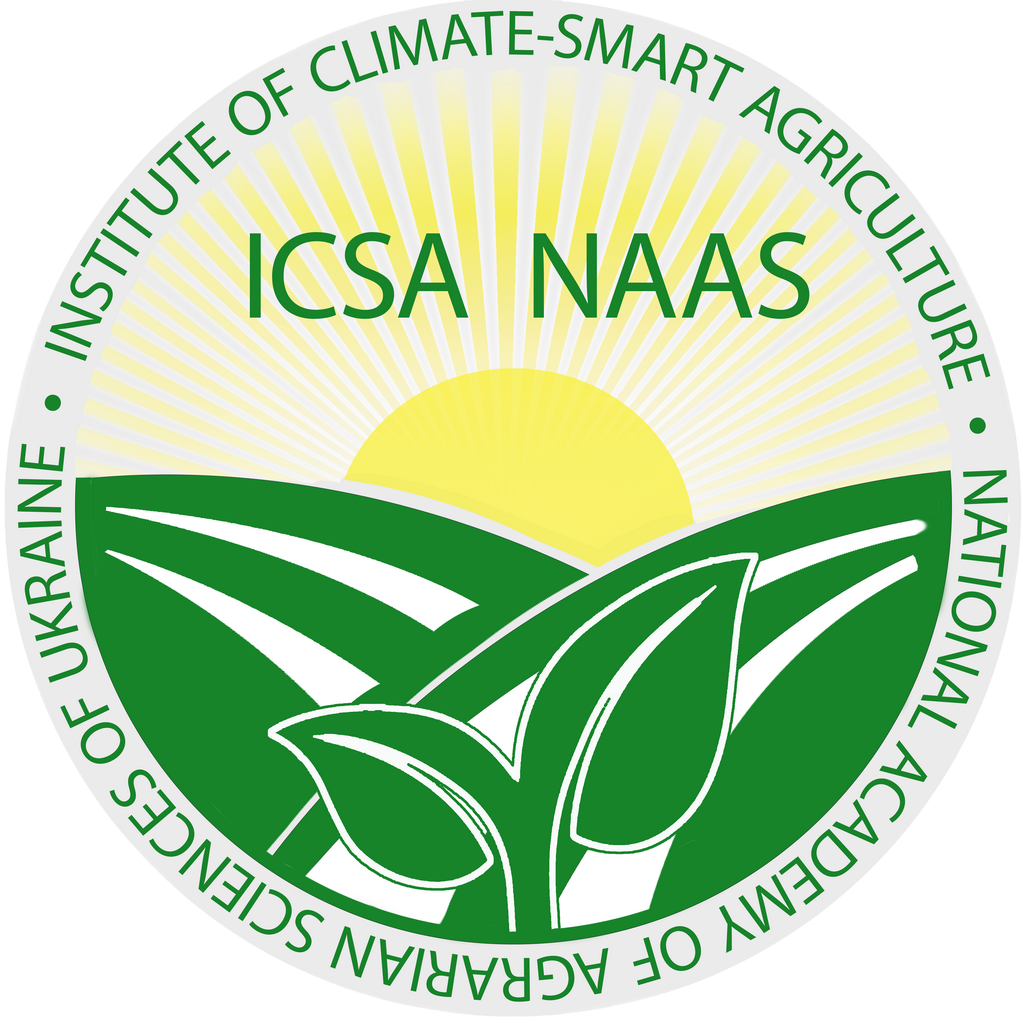Introduction and use of Monarda Fistulosa L. in the world and in Ukraine
Abstract
Purpose. The purpose of the work was to reviewand summarize the scientific achievements of domesticand foreign researchers regarding the morphobiologicalcharacteristics, economic importance, and cultivationtechnology of Monarda fistulosa L. Results. Analysis ofthe literature showed that Monarda fistulosa is consideredpromising for study and practical use by scientists frommany countries. In terms of its bactericidal properties,it ranks first among essential oil plants. The essentialoil of the plant has antagonistic activity against various pathogenic organisms. It has found wide application invarious sectors of the national economy: in medicine, foodindustry, agriculture. The content of essential oil in the plantranges from 0.5 to 2.8% when calculated on absolutelydry raw materials. More than 40 components have beenidentified in the essential oil of Monarda fistulosa. Themain components are thymol and carvacrol. The yield ofessential oil and the ratio of components from differentorgans of M. fistulosa plants can vary depending on bothgeographical origin and genotype. In addition to essentialoil, the above-ground part of Monarda contains vitamins C,B1, B2, anthocyanins, flavonoids and other biologicallyactive substances. In the herb M. fistulosa 18 free sugarswere found. The flowers of the plant are a source ofphosphorus (912 μg/100 g) and calcium (1760 μg/100 g).Monarda is propagated by sowing seeds directly in thefield or by planting seedlings obtained in a greenhouse, aswell as vegetatively – by dividing the plants into parts. Theapplication of nitrogen fertilizers when growing monardaincreases the yield of essential oil, but does not affect thecomponent composition. M. fistulosa and its hybrids, dueto their inflorescences of various colors, are also used inornamental gardening. Findings. Monarda fistulosa hassignificant biological and economic potential. It containsessential oil, which has found a wide range of uses invarious sectors of the national economy and is a promisingplant for cultivation for the production of raw materials forthe essential oil industry.
References
2. Lubbe A., Verpoorte R. Cultivation of medicinal and aromatic plants for specialty industrial materials. Industrial Crops and Products. 2011. Vol. 34, № 1. P. 785-801 https://doi.org/10.1016/j.indcrop.2011.01.019
3. Ковтун-Водяницька С.М. Досвід інтродукції Tagetes L. в НБС імені М.М. Гришка НАН України виходячи із сучасних запитів світового ринку ефіроносних рослин. Глобальні наслідки інтродукції рослин в умовах зміни клімату: матеріали Міжнародної наук. конф., присвяченої 30-річчю Незалежності України: K. : Lira-K, 2021. С. 40-43.
4. Мірзоєва Т.В. Економічні аспекти виробництва лікарських ефіроолійних культур. Проблеми системного підходу в економіці. 2019.
Вип. 3(1). С. 79-84. URL: http://nbuv.gov.ua/UJRN/PSPE_print_2019_3%281%29__14.
5. Стеценко І.І. Продуктивність лавандину за різних способів зрошення та систем удобрення в умовах півдня України. дисс… доктора філософії: 201/Херсон. 2023. 264 с.
6. Ковтун-Водяницька С.М. Перший український сорт Nepeta Sibirica L. (Lamiaceae Lindl.). Лікарське рослинництво: від досвіду минулого до новітніх технологій: матеріали V Міжнародної наук.-практ. інтернет-конф. Полтава, 27-28 грудня 2016 р. Полтава: РВВ ПДАА. 2016. С. 87-89. 2016. URL: https://www.pdau.edu.ua/sites/default/files/node/3285/vconfpoltava20161.pdf.
7. Котюк Л.А., Рахметов Д.Б., Пінкіна Т.В. Оцінка успішності інтродукції ароматичних рослин родини Lamiaceae Lindl. в умовах Полісся України. Інтродукція рослин. 2017. № 1. С. 11-20. URL: http://nbuv.gov.ua/UJRN/IR_2017_1_3.
8. Свиденко Л.В., Гудзь Н.І., Свиденко А.В. Результати інтродукції та селекції деяких видів нішевих ароматичних рослин в Степу Південному Climate-smart agriculture: science and practice: Scientific monograph. Publishing House “Baltija Publishing”, 2023. Р. 225-241. https://doi.org/10.30525/978-9934-26-389-7-12.
9. Davidson C.G. Monarda, Bee-balm. In: Anderson, N.O. (eds) Flower Breeding and Genetics. 2007. P. 757-779. https://doi.org/10.1007/978-1-4020-4428-1_28.
10. Корабльова О.А., Рись М.В. Біоморфологічні особливості видів роду Monarda L. Науковий вісник НЛТУ України. 2013. Вип. 23. № 5. С. 296-300 URL: https://nv.nltu.edu.ua/Archive/2013/23_5/296_Kor.pdfБююб. (дата звернення: 10.03.2025)
11. Salama A., Sabry R.M., Eldin M.S. Response of the newly introduced plant species Monarda citriodora in Egypt to nitrogen fertilization and plant density. Int. J. Pharm. Tech. Res. 2016. Vol. 9. № 7. P. 67-77.
12. Klimas J. Wild flowers of Eastern America. Cunningham J.N.Y. Publ. Knopf A.A., 1974. P. 76-104.
13. Свиденко Л. Інтродукція Monarda fistulosa L. в Херсонській області. Вісник Львівського університету. Серія біологічна. Львів, 2004. С. 319-324.
14. Dudchenko V., Svydenko L., Markovska O., Sydiakina O. Morphobiological and Biochemical Characteristics of Monarda L. Varieties under Conditions of the Southern Steppe of Ukraine. Journal of Ecological Engineering. 2020. Vol. 21(8). Р. 99-107. https://doi.org/10.12911/22998993/127093.
15. Lawson S.K., Satyal P., Setzer W.N. The Volatile Phytochemistry of Monarda Species Growing in South Alabama. Plants. 2021. Vol. 10(3), 482 https://doi.org/10.3390/plants10030482.
16. Kozyra M., Biernasiuk A., Wiktor M., Kukula-Koch W., Malm A. Comparative HPLC–DAD–ESI-QTOF/MS/MS Analysis of Bioactive Phenolic Compounds Content in the Methanolic Extracts from Flowering Herbs of Monarda Species and Their Free Radical Scavenging and Antimicrobial Activities. Pharmaceutics. 2023. Vol. 15(3), 964. https://doi.org/10.3390/pharmaceutics15030964.
17. Davies A.J., Mazza G. Separation and characterization of anthocyanins of Monarda fistulosa by high-performance liquid chromatography. Journal of Agricultural and Food Chemistry. 1992. Vol. 40(8), P. 1341-1345. URL: https://pubs.acs.org/doi/pdf/10.1021/jf00020a009 (дата звернення: 10.03.2025)
18. Рись М.В. Елементний склад надземної фітомаси рослин роду Monarda L., інтродукованих у північному Лісостепу України. Науковий вісник НЛТУ. 2013. № 23(6). C. 286-291 URL: https://nv.nltu.edu.ua/Archive/2013/23_6/58.pdf. (дата звернення: 11.03.2025)
19. Shanayda, M.I. Визначення якісного складу та кількісного вмісту вуглеводів у траві представників родини Lamiaceae Juss. Фармацевтичний часопис. 2016. Вип. 4. С. 15-18. https://doi.org/10.11603/2312-0967.2015.4.5550.
20. Palash M., Prerona S. Profiling of Mineral Content from Different Edible Flowers of West Bengal. Journal of Natural Remedies. 2024. P. 2157-2171. URL: https://informaticsjournals.co.in/index.php/jnr/article/view/44655/31383 (дата звернення: 09.03.2025)
21. Марковська О.Є., Дудченко В.В., Свиденко Л.В. Інтродукція перспективних сортів Monarda L. на півдні України. Таврійський науковий вісник. 2021. № 121. С. 75-80. https://doi.org/10.32851/2226-0099.2021.121.10.
22. Schiller C., Schiller D., Schiller J. The aromatherapy encyclopedia: a concise guide to over 385 plant oils. Basic health publ. 2008. P. 141-142.
23. Ann Arbor (Mich.). Natural Area Preservation Division. Along the Huron: The Natural Communities of the Huron River Corridor in Ann Arbor, Michigan. University of Michigan Press. International journal of Agriculture. & Biology. 1999. P. 1024-1034 DOI:10.17957/IJAB/15.1760 URL: http://www.fspublishers.org. (дата звернення: 11.03.2025)
24. Schmidt Erich. Production of essential oils. In: Handbook of essential oils. CRC Press. 2020. P. 125-160. URL: https://www.taylorfrancis.com/chapters/edit/10.1201/9781351246460-5/productionessential-oils-erich-schmidt. (дата звернення: 10.03.2025)
25. Збереження та збагачення рослинних ресурсів шляхом інтродукції та біотехнології / Корабльова О.А., Рись М.В. Інтродукція та селекція видів роду Artemisia та Monarda. К.: Вид-во «Фітосоціоцентр». 2012. С. 163-209.
26. Chandra Naresh, Bharati R.C. Monarda – APotential Floricultural Plant for Temperate India. Environment & Ecology. 2009. Vol. 27(2). P. 677-681.
27. Katarzyna Wróblewska, Antoni Szumny, Barbara Żarowska, Krystyna Kromer, Regina Dębicz, Saskia Fabian. Impact of mulching on growth essential oil composition and its biological activity in Monarda didyma L. Industrial Crops and Products. 2019. Vol. 129. P. 299-308. https://doi.org/10.1016/j.indcrop.2018.11.076.
28. Коваленко Н.П., Поспєлова Г.Д., Дзюба Є.В., Лаврський Є.О. Антибактеріальні та антифугальні властивості ефірної олії монарди (Monarda L.) щодо домінуючих мікроміцетів насіння сої. Scientific Progress & Innovations. 2023. № 26 (3). С. 63-68. URL: https://journals.pdaa.edu.ua/visnyk/article/view/1787. (дата звернення: 10.03.2025)
29. Oyeboade A., André B., Shahrokh K. Variable inhibitory activities of essential oils of three Monarda species on the growth of Botrytis cinerea. Canadian Journal of Plant Science. 2013. Vol. 93(6). P. 987-995. https://doi.org/10.4141/cjps2013-044.
30. Ricci D., Epifano F., Fraternale D. The Essential Oil of Monarda didyma L. (Lamiaceae) Exerts Phytotoxic Activity in Vitro against Various Weed Seed. Molecules. 2017. Vol. 22(2). https://doi.org/10.3390/molecules22020222.
31. Elisovetcaia D., Ivanova R., Casian I., Casian A., Brindza, J. Ethanolic extract and essential oils from Monarda fistulosa L. with ovicidal, insecticidal and antifeedant activity against Colorado potato beetle. Lucrări științifice. Seria Agronomie. 2018. Vol. 61(2). P. 69-72 URL: https://repository.iuls.ro/handle/20.500.12811/487?show=full. (дата звернення: 10.03.2025)
32. Côté H., Pichette A., St-Gelais A., Legault J. The Biological Activity of Monarda didyma L. Essential Oil and Its Effect as a Diet Supplement in Mice and Broiler Chicken. Molecules. 2021. Vol. 26(11). https://doi.org/10.3390/molecules26113368.
33. Wagner W.L. Wild bergamot. USDA NRCS National Plant Data Center. 2006. Vol. 13. P. 556-561.
34. Coltun Maricica, Bogdan Alina. Aspects of the biology and the cultivation of Monarda fistulosa L. as aromatic species in the Republic оf Moldova. Основні, малопоширені і нетрадиційні види рослин – від вивчення до освоєння (сільськогосподарські і біологічні науки): матеріали ІV Міжнародної наук.-практ. Конф. (у рамках V наукового форуму «Науковий тиждень у Крутах ». ДС «Маяк» ІОБ НААН. 2020. С. 103-109. URL: https://ibn.idsi.md/sites/default/files/imag_file/103-109_12.pdf. (дата звернення: 10.03.2025).
35. Calugaru-Spataru T., Casian A., Ivanova R., Dascaliuc A. Micropropagation of Monarda fistulosa L. plants by axillary bud proliferation. Agrobiodivers Improv Nutr Health Life Qual. 2023. Vol. 7(1). Р. 1-6 https://doi.org/10.15414/ainhlq.2023.0001.
36. Contaldo N. Phytochemical effects of phytoplasma infections on essential oil of Monarda fistulosa L. Bulletin of Insectology. 2011. Vol. 64. P. 177-178.
37. Шанайда М.І., Сіра Л.М., Машталер В.В. Мікроскопічний аналіз трави монарди трубчастої (Monarda fistulosa L.) родини Lamiaceae. Фармацевтичний журнал, 2016, № 5. С. 76-85.






